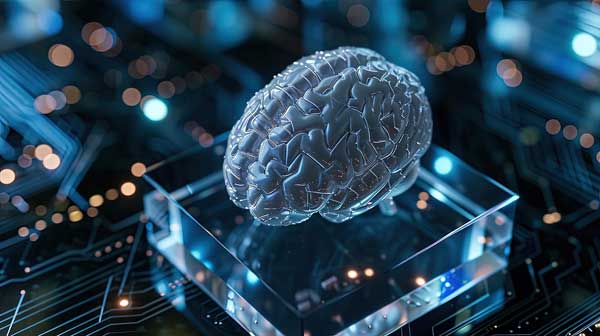Your health in 2045: AI calculates disease risks long before symptoms

[Artificial Intelligence, Credit to Pixabay]
An artificial-intelligence system called Delphi-2M analyses an individual’s health data, to calculate and predict a person’s risk over 1,200 diseases that the person is likely to develop over the next 20 years.
On September 16, 2025, the Science Media Centre reported that a new artificial intelligence(AI) tool, developed by a team including researchers from the European Molecular Biology Laboratory (EMBL), the German Cancer Research Center, and the University of Copenhagen, can now forecast a person’s likelihood of developing diseases decades in advance.
This AI model utilizes personal health records and lifestyle to assess the possibility of developing various conditions, such as cancer and immune conditions.
The researchers trained Delphi-2M on data from 400,000 people stored in the ‘Biobank’, which is the UK’s National Health Information System.
Additionally, they incorporated data from 1.9 million people in the Danish National Patient Registry to determine how well the AI could predict individual disease risk.
Although Delphi-2M was trained only on data from the UK, its predictive modelling could one day aid clinicians significantly in identifying high-risk individuals and enabling early preventive measures.
There are already several other existing AI-based tools that are able to predict a person’s risk of developing certain diseases, such as cancers and cardiovascular diseases, but most of the tools only estimate the risk of a specific disease.
This would figure out the inconvenience of healthcare professionals who would have to run dozens of other platforms in order to deliver a comprehensive answer.
The study co-author, Moritz Gerstung, and his colleagues modified the architecture of a large language model(LLM) that forms a similar format of AI chatbots such as ChatGPT.
They also designed their LLM to estimate an individual’s probability of developing 1,258 diseases based on their past medical history combined with the person’s age, sex, and health habits.
Through learning and reinforcement training, the AI simultaneously analyzes 1,231 disease risks, accurately predicting individual disease incidence and drawing disease risk curves.
The researchers explained, “Just like a weather forecast shows the probability of rain over the weekend, this AI can show a person’s disease risk.”
Moritz Gerstung, head of the oncology AI department at the German Cancer Research Center, who participated in the development, said, “AI is showing the way to individualized treatment for each individual in the future,” and “It will also help predict large-scale health care needs.”
It is said that Delphi-2M’s predictions reached or exceeded the precision of the current models that forecast the illness, and also performed better in a learning algorithm that uses the biomarkers, which indicate levels of specific molecules or compounds in the body.
The system performed best when forecasting diseases that follow predictable patterns of progression, like some types of cancer, up to two decades, depending on the information included.
Gerstung and his colleagues plan to further assess Delphi-2M’s accuracy on data sets from multiple countries to broaden its applicability and generalizability.
He added that thinking about how this information can be combined for developing even more precise algorithms will be important.

- Yezi Jang / Grade 11
- Asia American International Academy

![THE HERALD STUDENT REPORTERS [US]](/assets/images/logo_student_us.png)
![THE HERALD STUDENT REPORTERS [Canada]](/assets/images/logo_student_ca.png)
